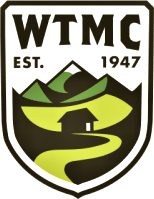WTMC invites you to explore nature, forge new friendships, and challenge yourself—all while enjoying New Zealand’s breathtaking trails. You don’t need to be a member to join a few trips before deciding to officially sign up. Here’s everything you need to know to get started!
If you have any questions about club trips, come meet us on a club night or contact the Chief Guide.
How to Join a Trip
- Choose a trip: Check out our Trip Schedule and decide based on the trip Grade and Type. Beginnersand new members (and those new to tramping in New Zealand) are encouraged to start with Easy (E) or Easy Medium (EM) trips.
- Sign up: Click the link to complete the online form. Commitment is essential, so plan carefully before signing up.
- Communications: The trip leader will contact you 2-4 weeks before the trip date with everything you need to know. The trip leader may ask you to collect gear from the club rooms in the week before the trip.
- Trip fees: These cover transport and a small club gear hire and admin charge. Additional expenses may include a group meal, DOC hut fees, ferries, water taxis, or other accommodation depending on the trip. If trips are cancelled fees are refundable.
Preparing for Your Trip
- Gear up: Consult the Club’s Gear List to ensure you’re equipped with essential items like warm layers, sturdy footwear and earplugs. Check out these short clips: Clothing for the outdoors and How to pack for a tramp.
- Ask questions: Research your destination. If you can’t find the answer online, the trip leader or chiefguide@wtmc.org.nz can answer your queries.
What to Expect
- Getting there: Groups will often meet at the train station on a Friday after work, but the leader will confirm departure time and location with you. You may also stop on the way for dinner (have a wallet and head torch handy).
- Safety first: Leaders assess risks and groups carry emergency beacons, shelters, and first aid kits.
- Camaraderie: At WTMC we walk together, support each other, and follow the trip leader’s guidance. Watch this quick video: How to travel as a group in the outdoors. You can contribute to the overall success of a trip by being positive, prepared and on time.
- Accommodation: Sometimes we stay at a back-packers, camp at the road end or walk in to a hut on the Friday night. During the tramp we generally stay in DOC huts, or tent if huts are full — flexibility is key. We follow the Hut Users Code which promotes respect for others, the huts we use and the wilderness we love.
- Meals: Usually Saturday night meals are a team effort; your leader will ask you to bring several ingredients for this meal and everyone helps prepare and wash-up. You need to bring your own food for breakfasts, lunches and snacks. Stoves are organised by the trip leader.
After Your Trip
- Meet: Join members new and old for a drink and a chat at a club or pub night
- Volunteer: Club trips and activities are run by people like you. Contact the Liaison Officer or Chief Guide and offer your services.
- Plan: Become a member and start planning your next adventure!
Join us for unforgettable experiences on the trail and become part of a passionate outdoor community!
